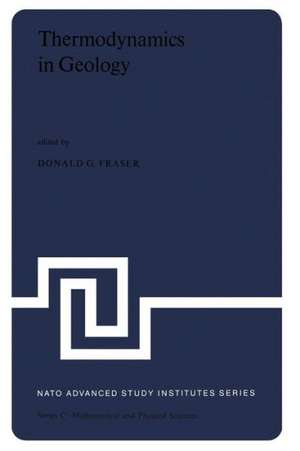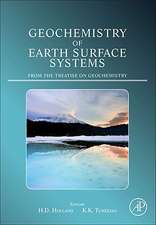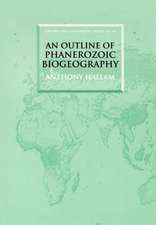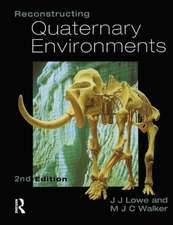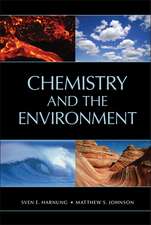Thermodynamics in Geology: Proceedings of the NATO Advanced Study Institute held in Oxford, England, September 17–27, 1976: Nato Science Series C:, cartea 30
Editat de D.G. Fraseren Limba Engleză Paperback – 31 oct 1977
Din seria Nato Science Series C:
- 24%
 Preț: 797.69 lei
Preț: 797.69 lei - 18%
 Preț: 957.62 lei
Preț: 957.62 lei - 18%
 Preț: 957.13 lei
Preț: 957.13 lei - 18%
 Preț: 1227.52 lei
Preț: 1227.52 lei -
 Preț: 396.40 lei
Preț: 396.40 lei -
 Preț: 403.75 lei
Preț: 403.75 lei - 18%
 Preț: 1239.37 lei
Preț: 1239.37 lei - 18%
 Preț: 1236.51 lei
Preț: 1236.51 lei - 18%
 Preț: 1231.78 lei
Preț: 1231.78 lei - 18%
 Preț: 1229.10 lei
Preț: 1229.10 lei - 18%
 Preț: 1835.21 lei
Preț: 1835.21 lei - 24%
 Preț: 1076.39 lei
Preț: 1076.39 lei -
 Preț: 390.46 lei
Preț: 390.46 lei -
 Preț: 369.63 lei
Preț: 369.63 lei - 18%
 Preț: 1232.41 lei
Preț: 1232.41 lei -
 Preț: 394.51 lei
Preț: 394.51 lei - 18%
 Preț: 1226.24 lei
Preț: 1226.24 lei - 18%
 Preț: 1845.80 lei
Preț: 1845.80 lei -
 Preț: 399.88 lei
Preț: 399.88 lei -
 Preț: 384.28 lei
Preț: 384.28 lei -
 Preț: 390.88 lei
Preț: 390.88 lei -
 Preț: 381.19 lei
Preț: 381.19 lei - 18%
 Preț: 1848.64 lei
Preț: 1848.64 lei - 18%
 Preț: 951.14 lei
Preț: 951.14 lei - 18%
 Preț: 1230.35 lei
Preț: 1230.35 lei - 18%
 Preț: 1236.51 lei
Preț: 1236.51 lei -
 Preț: 401.03 lei
Preț: 401.03 lei -
 Preț: 406.25 lei
Preț: 406.25 lei - 18%
 Preț: 1230.84 lei
Preț: 1230.84 lei -
 Preț: 418.34 lei
Preț: 418.34 lei - 18%
 Preț: 1223.74 lei
Preț: 1223.74 lei
Preț: 1222.94 lei
Preț vechi: 1491.38 lei
-18% Nou
Puncte Express: 1834
Preț estimativ în valută:
234.08€ • 254.35$ • 196.76£
234.08€ • 254.35$ • 196.76£
Carte tipărită la comandă
Livrare economică 22 aprilie-06 mai
Preluare comenzi: 021 569.72.76
Specificații
ISBN-13: 9789027708342
ISBN-10: 9027708347
Pagini: 428
Ilustrații: XIII, 410 p.
Dimensiuni: 155 x 235 x 22 mm
Greutate: 0.59 kg
Ediția:Softcover reprint of the original 1st ed. 1977
Editura: SPRINGER NETHERLANDS
Colecția Springer
Seria Nato Science Series C:
Locul publicării:Dordrecht, Netherlands
ISBN-10: 9027708347
Pagini: 428
Ilustrații: XIII, 410 p.
Dimensiuni: 155 x 235 x 22 mm
Greutate: 0.59 kg
Ediția:Softcover reprint of the original 1st ed. 1977
Editura: SPRINGER NETHERLANDS
Colecția Springer
Seria Nato Science Series C:
Locul publicării:Dordrecht, Netherlands
Public țintă
ResearchCuprins
1. Geological Applications of High Temperature Reaction Calorimetry.- 1.1 Introduction.- 1.2 Calorimetric solvents and oxide melts.- 1.3 Applications of high temperature calorimetry to mineral thermodynamics.- 1.4 Calorimetry of geothermal fluids and water containing systems at pressures up to 2 kbar.- Study Problems.- 2. Experimental Determination of the Mixing Properties of Solid Solutions with Particular Reference to Garnet and Clinopyroxene Solutions.- 2.1 Introduction.- 2.2 NaA1Si308-KA1Si308 feldspar solutions.- 2.3 MgSi0.502-FeSi0.502 olivine solutions.- 2.4 Aluminosilicate garnet solid solutions.- 2.5 Clinopyroxenes containing CaA12Si06 component.- 2.6 Conclusions.- 3. Thermochemistry of garnets and aluminous pyroxenes in the CMAS system.- 3.1 Importance of the CMAS system.- 3.2 Experimental difficulties.- 3.3 The role of thermochemistry.- 3.4 CaMgSi206-CaA12Si06 clinopyroxene.- 3.5 Mg3A12Si3012-Ca3A12Si3012 garnet.- 3.6 Application to the garnet peridotite problem.- Study Problems.- Solutions to Problems.- 4. Activity-Composition Relationships for Crystalline Solutions.- 4.1 Introduction.- 4.2 Mole fractions.- 4.3 Activity coefficients.- 4.4 Conclusions.- 5. Chemical Mixing in Multicomponent Solutions: An Introduction to the Use of Margules and Other Thermodynamic Excess Functions to Represent Non-Ideal Behaviour.- 5.1 Introduction.- 5.2 The solution properties of a binary mixture.- 5.3 Ternary and higher order chemical mixtures.- 5.4 Representation of the excess Gibbs free energy of mixing.- 5.5 The Margules equations.- 5.6 An annotated list of geological publications utilizing the Margules equations or their equivalents.- Study Problems.- 6. Determination of Atomic Occupancies.- 6.1 Introduction.- 6.2 The diffraction method.- 6.3 Mössbauer spectroscopy.- 6.4Infra-red methods.- 6.5 The meaning of occupancy.- Study Problem.- Solution to Problem.- 7. The Accuracy and Precision Of Calculated Mineral Dehydration Equilibria.- 7.1 Introduction.- 7.2 Definitions.- 7.3 Accuracy of calculated equilibria.- 7.4 Precision of calculated equilibria.- 7.5 Thermochemical data from P-T brackets.- 7.6 Discussion and conclusions.- Study Problems.- 8. Thermodynamics of Dehydration Equilibria.- 8.1 Introduction.- 8.2 Theoretical background.- 8.3 Retrieval of thermodynamic data.- 8.4 Calculation of phase diagrams.- 8.5 Dehydration equilibria involving crystalline solutions.- Study Problems.- Solutions to Problems.- 9. Fugacity and Activity of Molecular Species in Supercritical Fluids.- 9.1 Introduction.- 9.2 Scope and definitions.- 9.3 Review of available experimental data.- 9.4 Molecular dynamics.- 9.5 The Redlich-Kwong equation of state.- 9.6 Conclusions.- Study Problems.- 10. Compositions and Thermodynamics of Metamorphic Solutions.- 10.1 Introduction.- 10.2 O-H gases.- 10.3 C-O gases.- 10.4 C-O-H gases.- 10.5 C-O-H-S gases.- 10.6 H-O-F and H-O-N gases.- 10.7 Acids and bases.- 10.8 Measurement of the activity of H20.- 10.9 Summary and conclusions.- Study Problems.- 11. The Significance of Fluid Inclusions in Metamorphic Rocks.- 11.1 Introduction.- 11.2 Observation by conventional techniques (petrographic microscopy).- 11.3 Microthermometry: Tf and Th.- 11.4 Other analytical methods.- 11.5 Conclusion.- Study Problems.- Solutions to Problems.- 12. The Stability of Phlogopite in the Presence of Quartz and Diopside.- 12.1 Introduction.- 12.2 Experimental methods.- 12.3 Stability of phlogopite and quartz.- 12.4 Stability of phlogopite quartz and diopside.- 12.5 Thermodynamic considerations.- 12.6 Geological applications.- Study Problems.- 13. Opaque Minerals as Sensitive Oxygen Barometers and Geothermometers in Lunar Basalts.- 13.1 Introduction.- 13.2 Spinel solid solution series.- 13.3 Armalcolite series.- 13.4 Subsolidus reduction reactions.- 14. Thermodynamic Properties of Molten Salt Solutions.- 14.1. Introduction.- 14.2 Systems of the type AX-BX.- 14.3 Systems of the type AX-AY.- 14.4 Charge unsymmetrical mixtures which contain a common anion.- 14.5 Mixtures containing two cations and two anions.- 15. Thermodynamic Properties of Silicate Melts.- 15.1 Introduction.- 15.2 Nature of silicate melts.- 15.3 Acids and bases.- 15.4 Binary silicate melts.- 15.5 Application of mixing models.- 15.6 Standard states of oxide components.- 15.7 Effects of melt structure on liquidus boundaries.- 16. The Activities of Components in Natural Silicate Melts.- 16.1 Introduction.- 16.2 Thermodynamic characterization of silicate melts.- 16.3 Estimation of pressures and temperatures of equilibration.- 16.4 Example and discussion.- Appendix: Program for solving equations for P and T.- Study problem.- 17. The Thermodynamics of Trace Element Distribution.- 17.1 Introduction.- 17.2 Henry’s Law.- 17.3 Formulation of distribution coefficients.- 17.4 Relationship between distribution coefficients and equilibrium constants.- 17.5 Geothermometry and geobarometry.- 17.6 Trace elements in gas-solid reactions.- 17.7 Concluding Remarks.- 18. The Solubility of Calcite in Sea Water.- 18.1 Introduction.- 18.2 In situ saturometry.- 18.3 Laboratory kinetic measurements.- 18.4 Possible explanations for the differences between the Berner and Ingle et al. solubility results.- 18.5 Conclusions.- 19. Nonequilibrium Thermodynamics in Metamorphism.- 19.1 Introduction.- 19.2 Fundamental relations.- 19.3 Models for diffusion-controlled, steady-stateprocesses.- 19.4 The transformation to practical reference frames.- 19.5 Application to the Vastervik segregations.- 19.6 Conclusion.- Study Problems.- Solutions to Problems.
